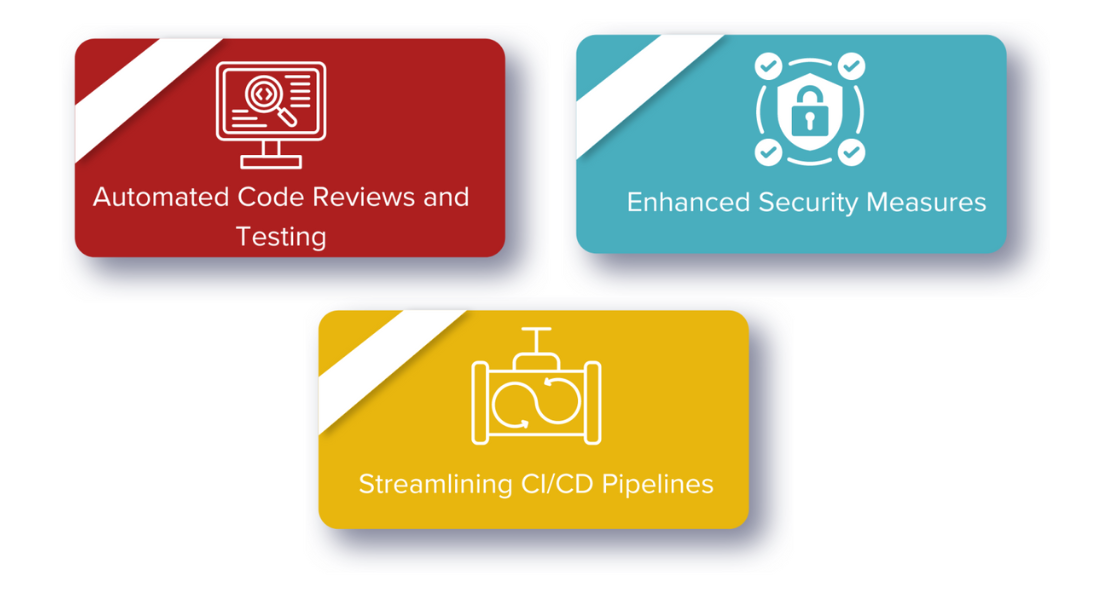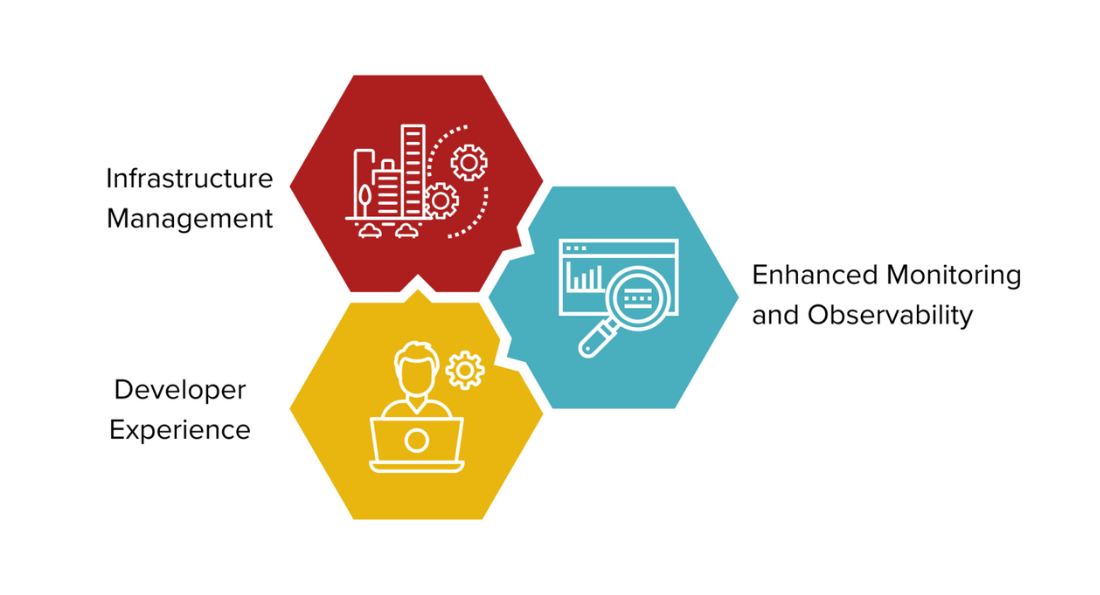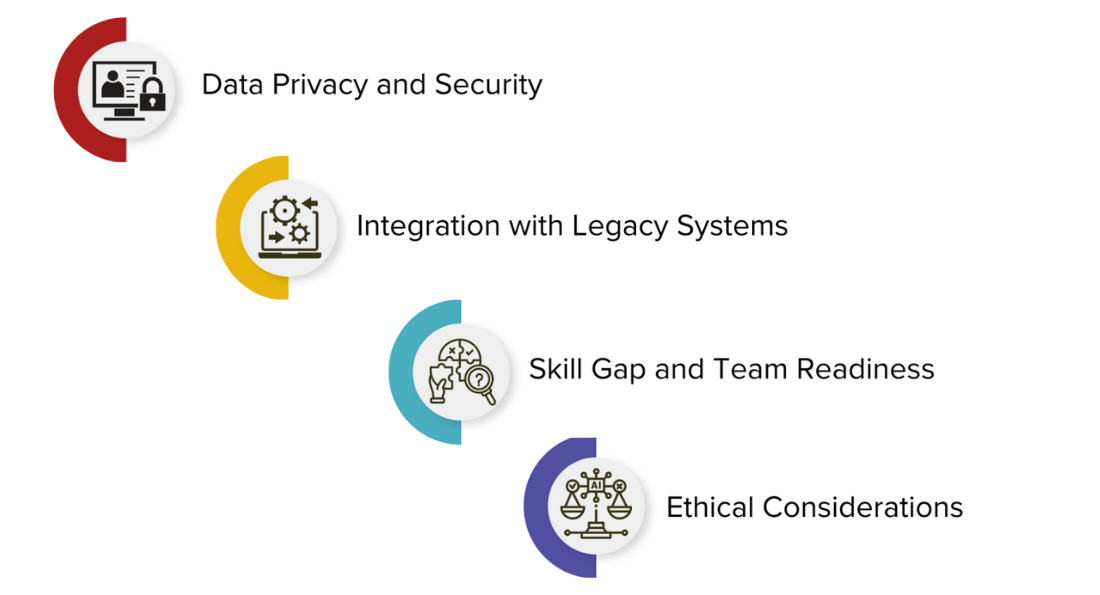Blogs
Harnessing AI in DevSecOps and Platform Engineering
Today, traditional development practices give way to more integrated and automated approaches like DevSecOps and Platform Engineering. At the same time, Artificial Intelligence (AI) is making significant strides across various industries, transforming how we work and interact with technology. This blog explores how AI is intervening in DevSecOps and Platform Engineering, enhancing efficiency, security, and innovation in software development and operations.

DevSecOps is an approach that integrates development, security, and operations into a unified process. It emphasizes embedding security practices throughout the software development lifecycle rather than treating security as an afterthought. By fostering collaboration among development, security, and operations teams, DevSecOps aims to deliver secure, high-quality software faster.
Platform Engineering focuses on building and maintaining the underlying infrastructure and tools that support software development and deployment. It involves creating scalable, reliable platforms that enable developers to deliver applications efficiently. Platform Engineers work to streamline processes, automate tasks, and ensure that the infrastructure can support the organization's evolving needs.

AI Interventions in DevSecOps
-
Automated Code Reviews and Testing
AI-Powered Static Code Analysis: AI tools are revolutionizing code reviews by automating static code analysis. These tools can scan codebases to detect vulnerabilities, code smells, and bugs more efficiently than manual reviews. Machine learning algorithms learn from vast code datasets to identify patterns associated with security flaws or performance issues, enabling developers to address problems early in the development cycle.
Intelligent Test Automation: Testing is a critical component of software development, and AI enhances this process through intelligent test automation. AI-driven tools can generate test cases, prioritize them based on risk assessment, and adapt tests in real-time as the code changes. This leads to more effective testing strategies, reduces the time spent on redundant tests, and ensures higher code quality.
-
Enhanced Security Measures
Predictive Threat Modeling: AI enables predictive threat modeling by analyzing patterns and behaviors that may indicate potential security threats. Machine learning models can process large volumes of data to identify anomalies and predict where vulnerabilities might occur. This proactive approach allows security teams to address risks before they are exploited.
Real-Time Security Monitoring: Real-time monitoring is crucial for maintaining security in software systems. AI-powered tools can monitor network traffic, user behavior, and system logs to detect unusual activities that could signify a security breach. By automating this process, organizations can respond to threats more swiftly and minimize potential damage.
-
Streamlining CI/CD Pipelines
Optimizing Build Processes: Continuous Integration/Continuous Deployment (CI/CD) pipelines are essential for modern software development. AI can optimize these pipelines by predicting build failures and suggesting fixes. Machine learning algorithms analyze past build data to identify patterns that lead to failures, enabling teams to address issues preemptively.
Dynamic Resource Allocation: AI plays a significant role in managing computational resources during deployment. It can dynamically allocate resources based on real-time demand and usage patterns, ensuring efficient infrastructure utilization. This not only improves performance but also reduces costs associated with over-provisioning resources.

AIs Role in Platform Engineering
-
Infrastructure Management
Self-Healing Systems: AI enables the development of self-healing systems that automatically detect and resolve infrastructure issues. Machine learning models monitor system performance and can trigger automated responses to fix problems without human intervention, leading to increased system reliability and uptime.
Predictive Maintenance: Predictive maintenance involves anticipating hardware or software failures before they occur. AI analyzes data from various sensors and logs to predict potential failures, allowing teams to perform maintenance proactively. It reduces downtime and extends the lifespan of infrastructure components.
-
Enhanced Monitoring and Observability
Anomaly Detection: Monitoring complex systems can be challenging. AI enhances observability by detecting anomalies that might indicate performance issues or security threats. Machine learning algorithms establish baselines for normal operation and alert teams when deviations occur.
Performance Optimization: AI assists in tuning system performance by analyzing usage data and making recommendations. It can adjust configurations in real time to optimize resource utilization, improve response times, and enhance the overall user experience.
-
Developer Experience
AI-Powered Development Tools: Developers benefit from AI-powered tools that provide code suggestions, autocomplete features, and error detection. These tools accelerate the development process, reduce the likelihood of errors, and enhance code quality.
Knowledge Management: AI facilitates knowledge management by organizing documentation and sharing best practices within teams. Natural Language Processing (NLP) can extract information from documents and code repositories, making it easier for developers to find relevant information and collaborate effectively.

Challenges and Considerations
Data Privacy and Security: While AI offers numerous benefits, it raises concerns about privacy and security. Organizations must ensure that AI systems handle sensitive data responsibly and comply with regulations like GDPR or HIPAA. Implementing robust data governance policies is essential.
Integration with Legacy Systems: Integrating AI into existing infrastructures can be challenging, especially with legacy systems. Compatibility issues may arise, requiring careful planning and potentially significantly restructuring existing systems to accommodate AI solutions.
Skill Gap and Team Readiness: Adopting AI technologies requires teams to have the necessary skills and knowledge. Organizations may need to address a skill gap through training and hiring. Investing in upskilling team members is crucial for successful AI integration.
Ethical Considerations: AI decision-making raises ethical concerns about accountability and transparency. Organizations must consider the implications of AI actions, ensure that decisions are explainable, and address any biases that may be present in AI algorithms.
Future Outlook
The Evolution of AI in DevSecOps and Platform Engineering: AI is set to further transform DevSecOps and Platform Engineering by enabling more autonomous systems and sophisticated analytics. We expect increased automation, smarter tools, and more integrated AI solutions to blend seamlessly into the development and operations workflow.
Emerging Technologies: Integrating AI with emerging technologies like edge computing and the Internet of Things (IoT) will open new avenues within DevSecOps. AI will help manage the complexity and scale of these technologies, providing better security and performance optimization.
Preparing for an AI-Driven Future: Organizations should proactively adopt AI strategies to stay competitive. It involves implementing AI tools and fostering a culture that embraces innovation and continuous learning. Investing in research, partnerships, and talent development will be key.
Integrating AI into DevSecOps and Platform Engineering is revolutionizing software development and operations. AI enhances efficiency by automating repetitive tasks, improves security through predictive analytics, and fosters innovation by enabling new capabilities. As the technology landscape continues to evolve, embracing AI is imperative for organizations aiming to stay ahead. It's time to explore AI solutions and invest in upskilling teams to harness AI's full potential in transforming how we build and maintain software systems.
This article has been published on LinkedIn.